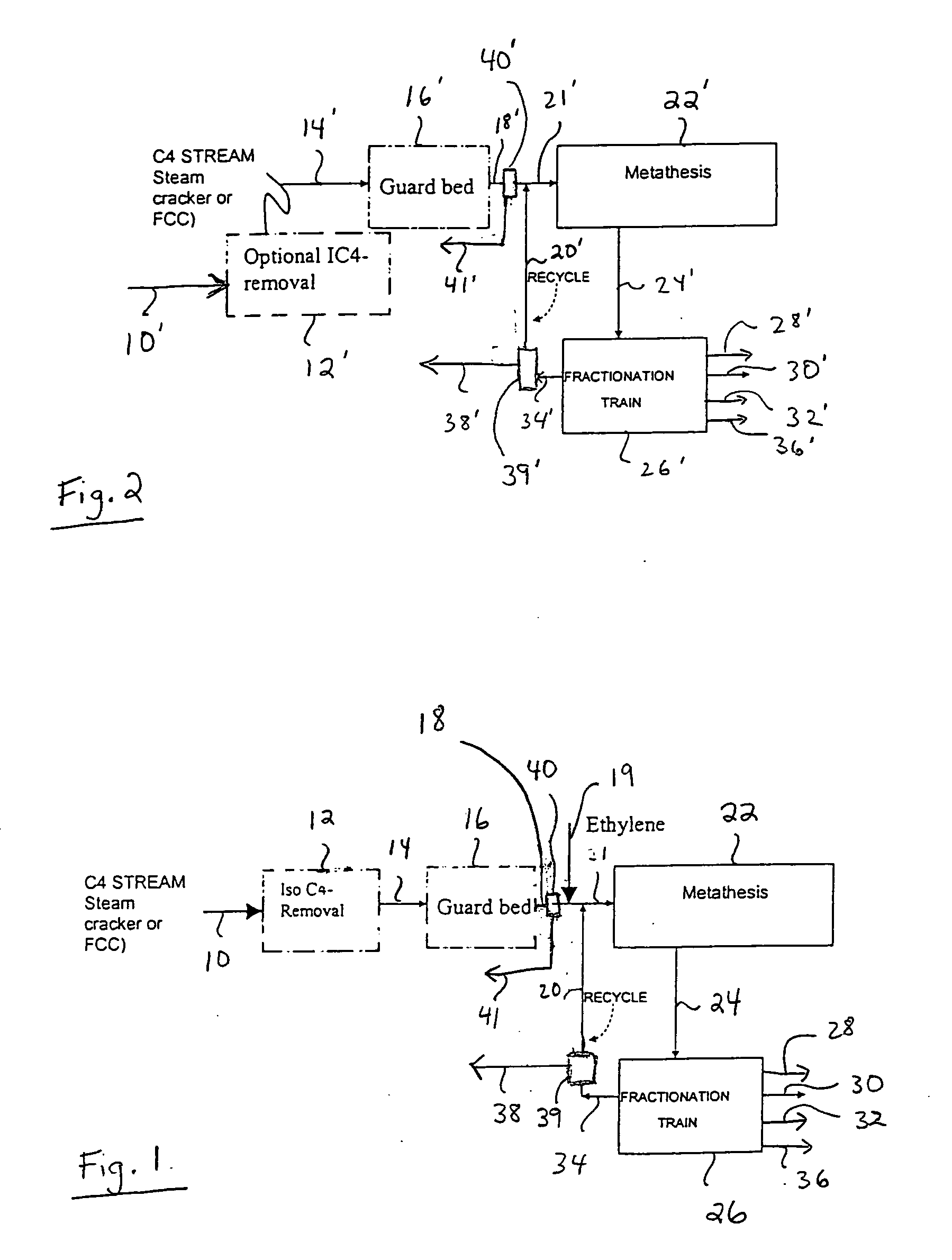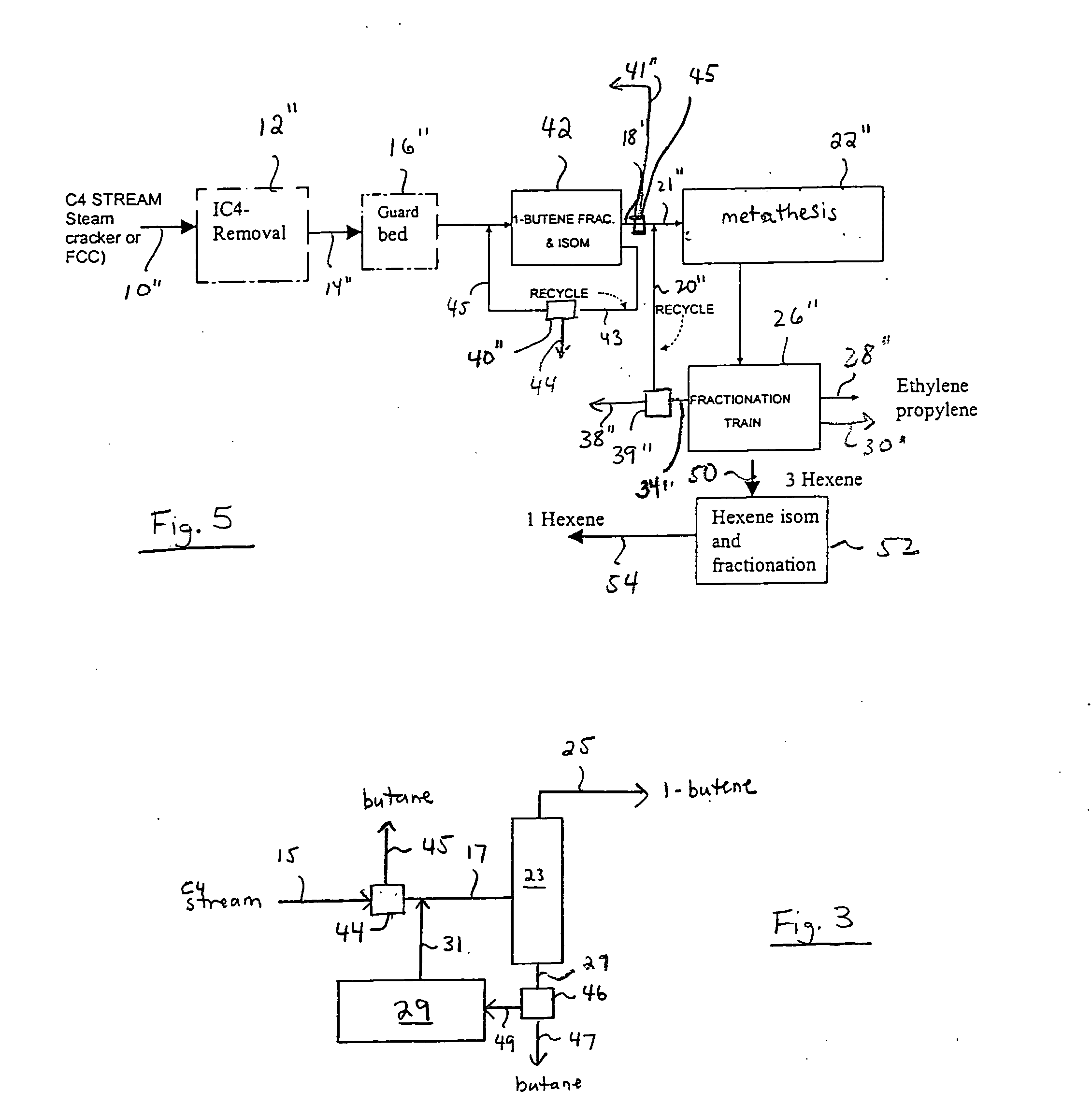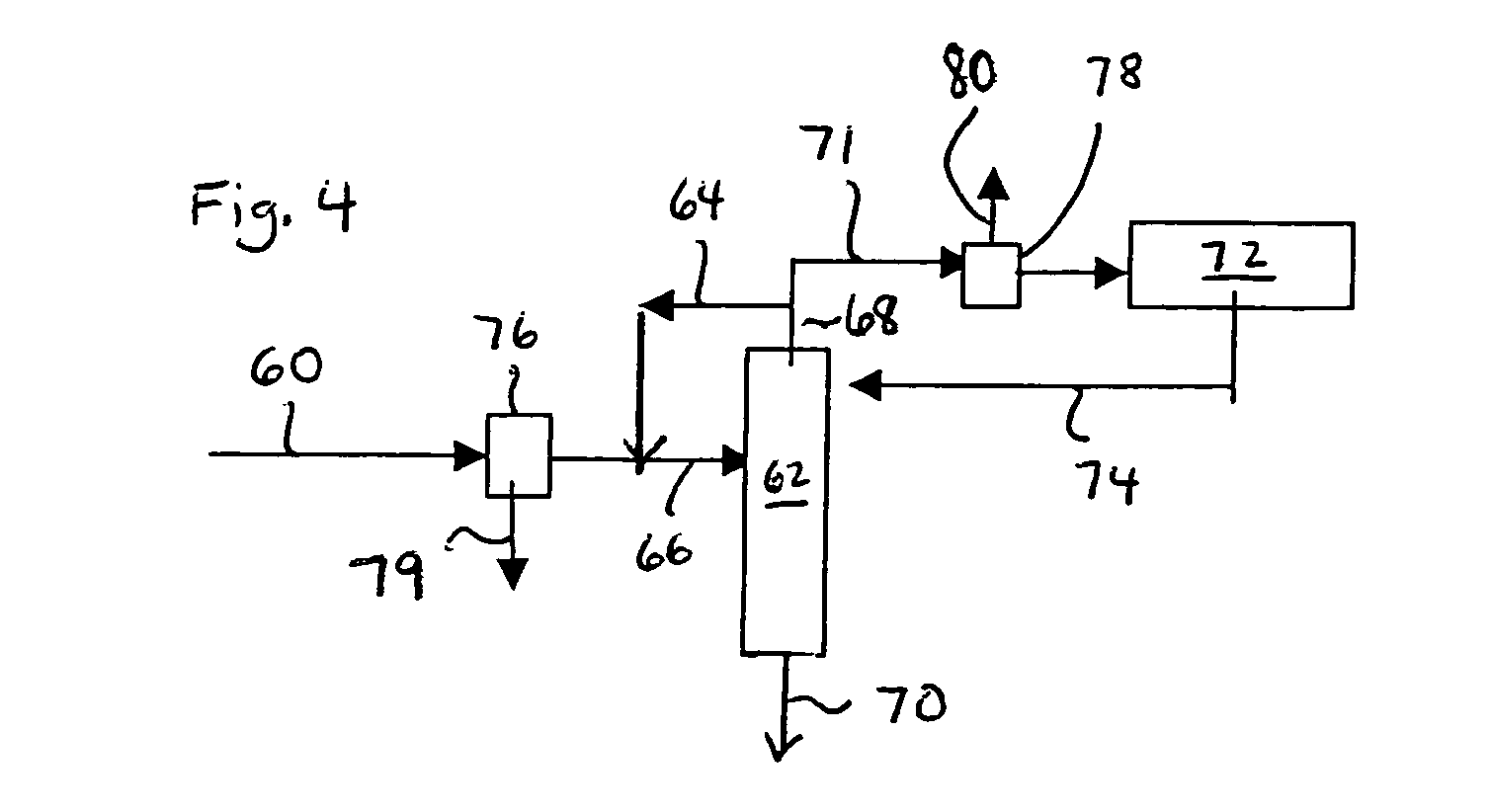Butane removal in C4 upgrading processes
a technology of upgrading process and butane, which is applied in the direction of hydrocarbon by metathesis reaction, sustainable manufacturing/processing, organic chemistry, etc., can solve the problems of limiting the processing of olefins in the feed stream, difficult to remove, and diluted reaction mixture, etc., to achieve efficient and low cost
- Summary
- Abstract
- Description
- Claims
- Application Information
AI Technical Summary
Benefits of technology
Problems solved by technology
Method used
Image
Examples
example 1
[0094] The process of Comparative Example 1 was repeated with the exception that downstream from the feed stream pump 256, fresh C4 feed stream 252, from which isobutylene and isobutane have been removed, was heated in a heat exchanger 255 and passed through a facilitated transport membrane 253 in order to remove butanes in a retentate stream 257. The retentate stream 257 was removed from the system as a purge stream. The purified C4 feed stream 259 was combined with a 1-butene isomerization reactor effluent stream 258 to form stream 260, which was fed to a 1-butene splitter 262.
[0095] The compositions for the feed, permeate, retentate, splitter bottoms purge, and product streams for the process of FIG. 7 are shown below in Table 2. The overall material balance and utilities summary is shown in Table 4.
TABLE 2Example 1FRESHB1C4PER-RETENTATEBOTTOMSPROD-Com-FEEDMEATEPURGEPURGEUCTponentkg / hrkg / hrkg / hrkg / hrkg / hri-Butane0.00.00.00.00.01-3BD0.00.00.00.00.0n-Butane964.1246.8717.3236.612...
example 2
[0096] The process of Comparative Example 1 was repeated with the exception that between the heat exchanger 374 and the 1-butene isomeriztion section 380, the 1-butene splitter recycle stream 370 was passed through a facilitated transport membrane 353 in order to remove in a retentate stream 355. The retentate stream 355 was removed from the system as a purge stream. The purified recycle stream 376 was compressed in a compressor 357 and conveyed to the 1-butene isomerization section 380. The overall process is designated as 350.
[0097] The compositions for the feed, permeate, retentate, splitter bottoms purge and product streams for the process of FIG. 8 are shown on Table 3. The overall material balance and utilities summary is shown on Table 4.
TABLE 3Example 2FRESHB1C4PER-RETENTATEBOTTOMSPROD-Com-FEEDMEATEPURGEPURGEUCTponentkg / hrkg / hrkg / hrkg / hrkg / hri-Butane0.00.00.00.00.01-3BD0.00.00.00.00.0n-Butane964.159.6955.06.63.0NButenes2913.08147.7215.256.92640.4iButenes5.90.10.00.05.9Hea...
example 3
[0099] The process of Example 2 was repeated except that the 1-butene isomerization capacity was increased by 40%. The results are shown on Table 5. This Example shows the advantages of membranes in both improving capacity and reducing utility consumption. Even with the higher capacity operation, the sizes of the equipment and the recycle and reflux flows (hence pumping requirements) are still lower than the case of comparative example 1 and the utilities are 71% lower than the case of comparative example 1.
TABLE 5OVERALL MATERIAL BALANCE AND UTILITIES SUMMARYComparativeExample 1NOExample 2Example 3MEM-MEMBRANEMEMBRANEBRANECASECASEUTILIZATION, %909090Feeds, MTAFresh C4 Feed32,00032,00044,800Total Feed, MTA32,00032,00044,800Products, MTAButene 1 Product21,28821,19229,518Bottoms Purge to LPG10,7125202,146Retentate Purge to LPG010,28813,136Total Products, MTA32,00032,00044,800UtilitiesCW, MMKCAL / Hr30.9506.3618.897MP Steam, MMKcal / Hr26.4905.1487.206LP Steam, MMKcal / Hr2.7400.8431.162Po...
PUM
| Property | Measurement | Unit |
|---|---|---|
| Fraction | aaaaa | aaaaa |
| Fraction | aaaaa | aaaaa |
| Fraction | aaaaa | aaaaa |
Abstract
Description
Claims
Application Information
 Login to View More
Login to View More - R&D
- Intellectual Property
- Life Sciences
- Materials
- Tech Scout
- Unparalleled Data Quality
- Higher Quality Content
- 60% Fewer Hallucinations
Browse by: Latest US Patents, China's latest patents, Technical Efficacy Thesaurus, Application Domain, Technology Topic, Popular Technical Reports.
© 2025 PatSnap. All rights reserved.Legal|Privacy policy|Modern Slavery Act Transparency Statement|Sitemap|About US| Contact US: help@patsnap.com



